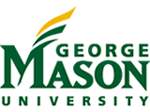
|
OR 647
Queueing Theory John Shortle Systems Engineering and Operations Research George Mason University |

|

We are all familiar with waiting in lines – in the grocery store, on the telephone, at the airport, on the road. Queueing theory is the mathematical study of lines. Because lines form from arrival and service processes that are typically random, queueing theory relies on the mathematical study of stochastic processes.
Some common types of questions that queueing theory can address are: What is the average time spent waiting in line? How long are the lines on average? How many customers wait more than 2 minutes? How many customers are turned away? How many servers are needed to achieve a target quality of service? How fast must the servers work? Answers to these questions provide decision makers a way to efficiently allocate resources to reduce delay.
This course provides a survey of quantitative models used to analyze queueing systems. The focus is both on mathematical analyses of such models as well as practical issues in using such models to represent real systems.
The course assumes prior knowledge of calculus-based probability. The pre-requisite for this course is OR 542 (Stochastic Models), or STAT 544 (Applied Probability), or permission of the instructor. Knowledge of continuous-time Markov chains (CTMCs) is very helpful, but not required (key aspects of CTMCs will be presented briefly in class).
Class Offered: Spring semester
Prerequisite: OR 542 (Stochastic Models), or STAT 544 (Applied Probability), or permission of instructor
Textbook: Shortle, Thompson, Gross, Harris,
Fundamentals of Queueing Theory, Fifth Edition.
Syllabi from past courses
(fall 2018 and later;
spring 2018 and earlier)
Return to home page